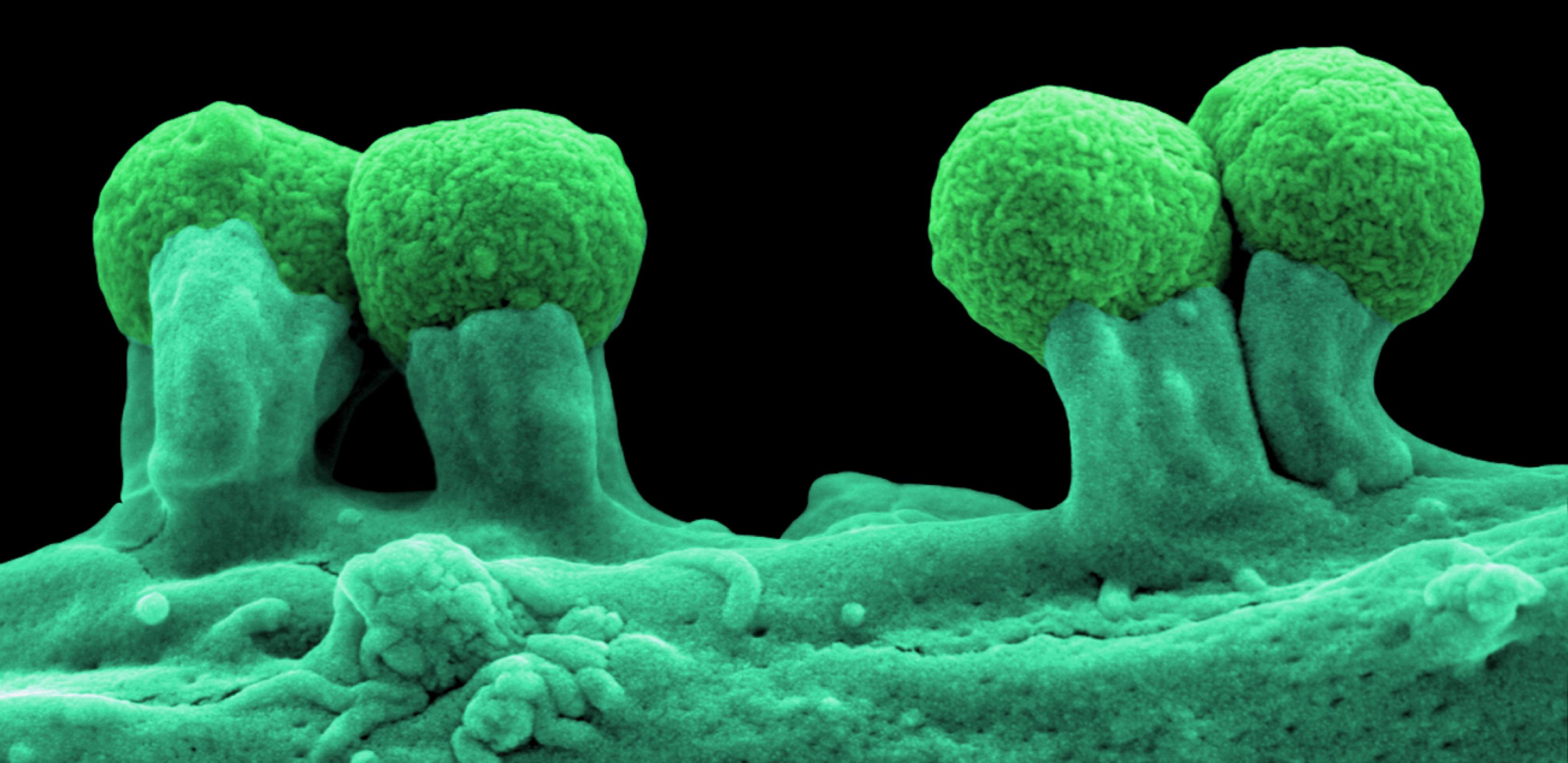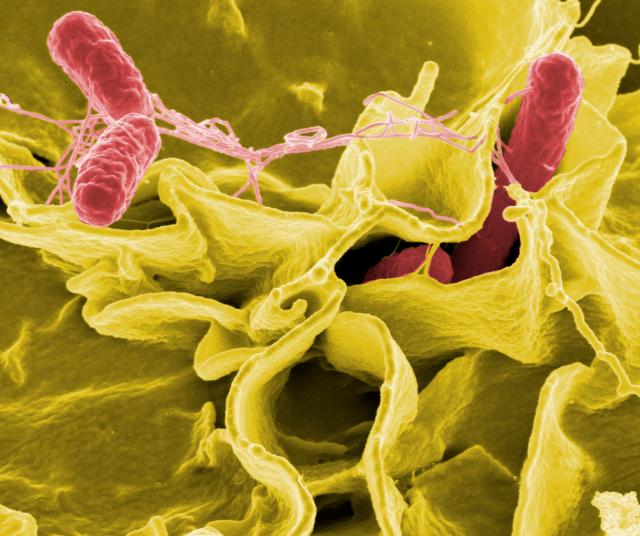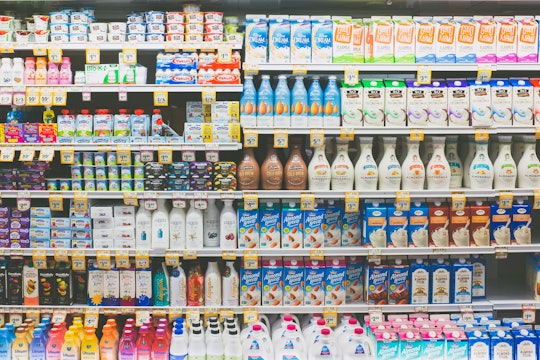Refrigeration slows – but doesn't stop – food rot. Now scientists know why
Bacteria like E. coli have a system to recover from the cold
Storing food at cold temperatures may one humanity's oldest tricks. We have used cold to prolong the shelf-life of food long before refrigerators, and even long before we knew bacteria existed, much less that they were (and still are) a major culprit of food spoilage. Our confidence in cold is well-earned, but until recently a mystery remained: why does this work?
My labmate Yan Zhang, a post-doctoral researcher at UC San Francisco, is by now very familiar with refrigerators and very familiar with bacteria. A microbiologist by training, she has taken her favorite bacterium, E. coli, into her lab's walk-in refrigerator, where it undergoes the same trials as the bacteria that (inevitably) exist on the surfaces of food products: a reliable halt in growth caused by cold.
At room temperature and warmer, many bacteria that cause food-borne illness can multiply rapidly, threatening to achieve an infectious dose in one of those future bites. In fact, food safety organizations refer to room temperature as being squarely in the “Danger Zone” — to a bacterium, known as tropical paradise — recommending that food products spend as little time at that temperature as possible.
Once it’s in the refrigerator, we can relax a little about our food. Bacteria in cold environments stop their relentless growth, limiting the number of food-borne illness-causing bacterial cells, and preventing other hoards of ravenous bacteria from eating our food before we do.
Out of the 'Danger Zone'
Modern life is now filled with examples of this strategy in action at the global and local scales. Refrigerated transportation, known as the “cold-chain,” globalized food markets and will likely continue to expand; and as individual consumers, we carry groceries home and can safely forget about them for a few days in the fridge. With cold, we assert our domination over the microbial world and the process of decay it serves.
Cataloging all the ways in which bacteria die may be a largely academic pursuit (specifically, mine), but there is a reason to pay closer attention to bacteria in the cold: eventually, they start to grow again.

A danger zone meal
It’s never too soon to become acquainted with the United States Department of Agriculture's recommended storage times for refrigerated food products, but suffice to say none of them are indefinite. There is a real time limit on our silver bullet of refrigeration, adding to the mystery of what exactly cold does to those bacteria, and how on earth they get over it.
A new study published in Molecular Cell lead by Zhang has described with molecular detail exactly what happens to bacteria in the cold when they stop growing, and has identified a cellular surveillance system that undoes the damage wrought by cold so that they can grow again.
Zhang, who says she never gets a chance to wear her heavy winter jackets in San Francisco, found a use for them while doing these experiments.
“Cold never bothered me anyway!” she says; the question was, how do her bacteria come to share this sentiment?
The challenge for every cell (at any temperature) is that in order to grow, it needs to make more proteins. This usually requires two steps: DNA instructions are copied into RNA (in a process called transcription), and then RNA instructions are followed to make a protein chain (translation), which goes on to fold into its final blob shape. These two steps comprise the central dogma of molecular biology.
Protein chickens protein eggs
The mind-bending thing is that other proteins (mostly) are the things that make new proteins. Proteins (and other tiny things) that do work are called enzymes, but in order to do that work they too must have been transcribed and translated at some point, a kind of molecular chicken-and-egg situation. In fact, a bacterial cell expends about half of its resources just making more protein-making enzymes, and there is abundant evidence that this allocation is optimal for how quickly bacteria grow.
Altogether this means that making new proteins is a top priority for the cell, and keeping that production line flowing is of utmost importance, especially in a crisis.
Just like the machines we use in our daily lives work optimally within a certain temperature range (try starting a car when it’s below freezing), temperature imposes huge challenges for molecular machines like enzymes. As Zhang found, both steps for making new proteins (transcription and translation) dramatically slow when bacteria are moved to the cold.

E. coli
ZEISS Microscopy / Flickr
But they don’t totally stop. In particular, Zhang was interested in the translation (RNA to protein) step. Why can’t cells just change their growth rate to accommodate their now slower protein-making enzymes?
Temperature imposes a cost on the enzymes that read and write protein instructions, Zhang found, but it imposes another cost as well: on the messages themselves, in this case the RNA.
Zhang used a method called DMS-seq which takes a snapshot of every molecule of RNA in the cell, measuring how structured (i.e. crumpled-up) it is. By comparing the structures of each RNA at normal and cold temperatures, Zhang found that nearly every RNA became a tangled mess in the cold, but that – amazingly – over the course of six hours (still in the cold) all RNAs relaxed to a lower level of structure.
RNA in the cold
The reason bacteria care about how structured their RNAs are is that more structured RNA messages are harder to translate into proteins. The RNA instructions are like a long scroll that must be read in order to make its corresponding protein; a tangled scroll must first be carefully teased apart before reading start to finish. Zhang found that initially the cell’s overall protein production took a double hit from the cold: slower enzymes and crumpled messages.
While there may be no quick cure for cold-slowed enzymes (unless you have time for three billion years of evolution), RNA tangling is reversible, and in fact appeared to reverse itself over time in the cold.
What was untangling the RNAs and allowing them to be translated into protein?
A family of proteins called the Cold Shock Proteins (or Csps) were prime candidates.
The Csps have long been recognized as some of the most abundant proteins made by bacteria in cold temperatures, meaning that making Csps is somehow prioritized even when the general protein-making capacity is limited. How could this be?
Zhang’s experiments have shown that Csps have unique RNA messages in two respects. First, the RNAs are very abundant at all temperatures, meaning that they are always available to be translated into protein at the drop of a hat, without waiting for new transcription (DNA to RNA). Secondly, they have a unique structure that behaves the opposite of most other RNAs: at room temperature it is more structured, and at cold it becomes unstructured. At cold, suddenly the Csps' RNAs become the easiest things to translate to proteins, accounting for the sudden abundance of Csps.

Salmonella bacteria
NIAID / Flickr
Zhang was surprised at the strength of this effect. “The expression level of Csps is SO high during cold adaptation,” she says. “The cells are spending about 25 percent of their total translational energy just to make one protein” – the major Csp in E. coli.
The huge amount of Csps is important because they have a big job to do: coating and untangling the mess of all other RNAs in the cell, like clothespins teasing and holding them safely apart. Another important player in the cold surveillance system Zhang identified deals with RNAs tangled beyond repair. An enzyme called an RNAse destroys the backlog of tangled RNAs, helping the protein-making machinery get back on track sooner.
Cold shock
Unbiased experimental approaches were key in identifying the Csps and the RNAse as the major components of the cold surveillance system. This means that instead of having a specific hypothesis about what proteins are important in the cold, Zhang measured the abundance of every protein to find the most abundant ones specific to cold.
“Using global approaches will give us a 'big picture' of what’s going on, which is helpful to decide which direction to continue,” she says.
“Most of the stress responses that have been intensively studied so far act on the transcription level,” Zhang says. The fact that the cold shock response acts at the translational level (RNA-to-protein step) makes it unique. “Translational regulation is much less known both on a genomic level and on a gene-specific level.”
Zhang’s work has described how bacteria in particular handle environmental changes that challenge a key process in growth (making proteins), but their strategy may be more widely applicable. Bacterial stress responses, including the cold surveillance program, are frequently programmed into economically important organisms like food crops to improve their hardiness. By transferring bacterial Csps into maize crops, researchers report that plants are increasingly tolerant to drought.
By many metrics, plant and bacterial cells truly differ, but in a chemical sense they are made up of the same types of molecules (e.g. RNA) and have the same requirements of them (e.g. generally remain unstructured). Looking for the bacterial strategies to manage very generalized stresses like temperature may open windows into improving other crop characteristics.
Meanwhile, what should we think about the food (and bacteria) in our refrigerators? Cold temperatures have been and will remain a tried-and-true pillar of food safety, but if you are someone who needs to know how something works in order to fully trust it then you may finally be able to rest easier. It is no small feat (well, technically microscopic) for bacteria to grow in cold temperatures, and even greater a feat to unravel a mystery that has sat in the back of our minds, and fridges, for centuries.

